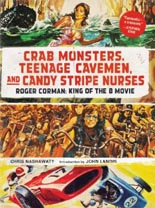
 Nearly 20 years ago, I had the pleasure of interviewing Gunnar Hansen, who forever will be known as Leatherface in the 1974 horror classic The Texas Chain Saw Massacre. While his iconic character is terrifying and evil, Hansen himself is not. He’s a teddy bear, nice and gracious as can be.
Nearly 20 years ago, I had the pleasure of interviewing Gunnar Hansen, who forever will be known as Leatherface in the 1974 horror classic The Texas Chain Saw Massacre. While his iconic character is terrifying and evil, Hansen himself is not. He’s a teddy bear, nice and gracious as can be.
Therefore, it’s not a surprise to me that his book on the making on that movie, Chain Saw Confidential, is like its author: well-spoken and informative, yet also politely quiet and respectfully subdued. Those hoping for a Fangoria-style exercise in gore will be disappointed.
I didn’t, so I wasn’t. After all, The Texas Chain Saw Massacre isn’t nearly as violent as its title or reputation suggests. It’s an intense film, no doubt, but so much of its brutality isn’t onscreen — it’s filled in by viewers’ minds. The movie is also not a cult film, because, as the book reminds us, it simply was far too successful to qualify.
Success was hardly on the minds of any of the cast members, all unknowns just happy to be making a Real Movie, even if they didn’t think anything would become of it. Financed in part by drug money, Tobe Hooper’s Massacre proved tougher to make than it is to watch, thanks to the unbearable summer heat of the Lone Star State and, during the now-famous dinner scene that took 26 hours to shoot, the smell of dead dogs and headcheese.
With remarkable clarity and detail for something that took place four decades ago, Hansen recounts the treacherous, unpredictable shoot, plus the squabbles over profits the creatives never saw when the film hit big. Given the flick’s monster grosses, they thought they would be rich; “Instead,” Hansen writes, “things just got weird.”
The book retreads a lot of the info from documentaries on the various DVD editions over the years, but gives readers much, much more. (Example: learning that Hooper and company wanted and thought they were going to get a PG rating.) Hansen leans on co-stars for quotes and recollections (but not, tellingly, Hooper), yet the story is told from his frontline perspective. It’s a tale uniquely his own. —Rod Lott




